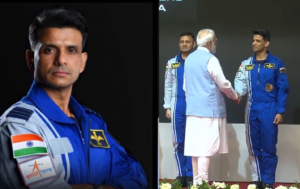India’s Satellite-Based Toll System Launching May 1, 2025: Everything You Need to Know
Introduction
India is stepping into the future of toll collection with a revolutionary policy set to be launched on May 1, 2025. This policy will implement a satellite-based toll collection system, leveraging Global Navigation Satellite System (GNSS) technology to modernize highway infrastructure and replace the traditional FASTag mechanism.
FASTag System: What is the New Toll System?
The upcoming toll system will operate using GNSS-based tracking. Each vehicle will be fitted with an On-Board Unit (OBU), which will communicate with satellites to track the vehicle’s movement on national highways. Unlike the FASTag system, where drivers must slow down at toll plazas for RFID scanning, the GNSS system calculates tolls based on the actual distance traveled, making the process completely barrier-free and contactless.
The Government’s Vision Behind This Step
The shift from FASTag to a satellite-based system is part of the government’s broader “Digital India” and “Green Mobility” initiatives. By reducing stop-and-go traffic at toll booths, the system aims to:
- Minimize congestion on highways
- Cut down on fuel usage
- Lower carbon emissions
- Improve travel efficiency and ease for commuters
It also aligns with global tolling practices, modernizing India’s road transport infrastructure.
How Will This System Work?
Here’s a step-by-step breakdown of how the new GNSS-based tolling will work:
- Installation of OBU (On-Board Unit) in vehicles
- Vehicle movements are tracked via satellite
- Tolls are charged automatically based on per-kilometer distance traveled
- Charges are deducted from a linked digital wallet or bank account
- No need to stop at any physical toll booth
A key highlight is that the first 20 km of any highway journey will be toll-free, ensuring that short-distance travelers are not unfairly burdened.
Who Will Be Directly Affected?
Initially, the new toll system will be rolled out only for commercial vehicles, such as buses and trucks. Private vehicles will be brought into the system in the second phase. This phased implementation will allow for smoother adaptation and troubleshooting.
What Should You Do as a Vehicle Owner?
For now:
- Private car owners do not need to take immediate action
- Commercial vehicle owners should prepare for OBU installations and ensure digital payment systems are in place
- Stay updated via government announcements and your vehicle’s registration portal
What Will Happen to FASTag?
FASTag, which revolutionized toll collection in 2019, will still be in use during the transition phase. Over time, as OBUs become mainstream, FASTag will be phased out. This ensures there is no disruption in toll services during the switchover period.
Real-Life Experiences from Other Countries
Countries like Germany, Russia, and Singapore have successfully implemented GNSS-based tolling. Their experiences show:
- Faster traffic movement
- Enhanced toll compliance
- Significant savings in time and fuel
- Improved traffic data analysis for future planning
India is set to replicate and possibly enhance this global standard.
Benefits of the New Toll System
- Barrier-Free Travel: No more toll booth stops
- Distance-Based Charging: Pay only for what you use
- Eco-Friendly: Lower emissions and fuel savings
- Time-Saving: No traffic congestion at toll plazas
- Digital Records: Full transparency and dispute resolution
- Maintenance-Free: Unlike RFID tags, OBUs are less prone to wear and tear
My Personal Opinion
As someone who travels frequently across states by road, this development feels like a breath of fresh air. Waiting in long queues at toll booths, especially during festive seasons or weekends, has always been frustrating. The new GNSS tolling system could genuinely make intercity travel faster, smoother, and more efficient.
Moreover, distance-based billing makes the toll system fairer. A person traveling 30 km shouldn’t pay the same toll as someone traveling 200 km. This shift is logical, practical, and much needed.
External References
- Indian Express: How the GNSS toll system works
- India Today: How GNSS will change your highway experience
- Times of India: FASTag to be replaced by GPS-based tolling
Share this content:











Post Comment